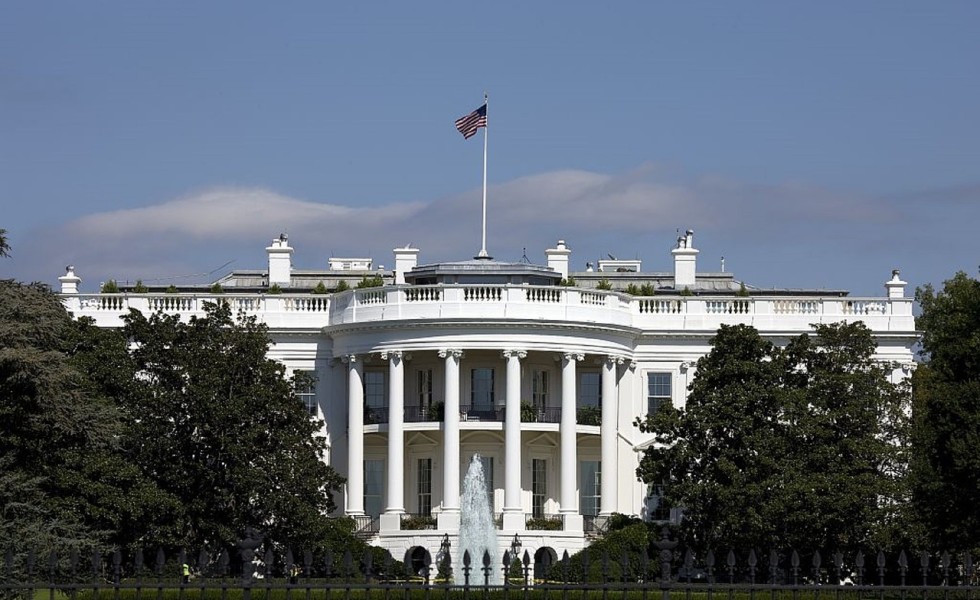Demanding More
Posted on September 28, 2017

After Hurricane Harvey plowed through east Texas with roof-peeling winds and never-before-seen rain, millions of Americans were left not knowing what to do or where to turn.
President Donald J. Trump made two trips to the flattened, flooded region. In his first drop-in, most observers noted, the President failed to cry with any bereaved, comfort any afflicted or even hug one displaced victim. A second, more empathetic trip followed a few days later.
After his Texas two-stop, the President moved from visiting one natural disaster to drumming up his own unnatural disaster.
Frustrated that America’s NAFTA partners Canada and Mexico actually want to negotiate, not rubber-stamp, his proposed changes to the generation-old North American free trade deal, Trump took to Twitter to chastise our long-time partners and undermine our newbie negotiators.
“We are in the NAFTA (worst trade deal ever made) renegotiation process with Mexico & Canada. Both being very difficult, may have to terminate?” wrote the Twitterer-in-Chief.
American farm leaders, who watch this Trump trade melodrama almost weekly, rolled their eyes, bit their lips, and said little. Soon, however, the President, a compulsive commenter, let his fingers do even more trade trash talking.
First, he Twitter-whipped one of America’s biggest, richest ag importers, South Korea. Next he threatened to break with any U.S. trading partner who had anything to do with North Korea, arguably the world’s most pressing nuclear threat.
The presidential huffing and puffing finally became too much for some American ag leaders who were witnessing decades of righteous trade preaching shredded by tweets from a seething heretic who wouldn’t know a wagon from a Wagyu.
On Sunday, Sept. 3, the American Soybean Association (ASA) publicly acted. In a toughly worded “stern warning,” it cautioned the President that his threatened withdrawal from the South Korea-U.S. trade deal and his “larger strategy of brinkmanship with regard to trade agreements… could have disastrous consequences” for American farmers and ranchers.
And, the ASA added, “As American soybean farmers, we demand that the U.S. remain in KORUS”—the U.S.-South Korea trade deal—“and that we move forward to negotiate new trade agreements rather than retreating from existing ones.”
This call-out of our tweet-before-thinking President could be a turning point for ag leaders. Now is a good time for them to stop lining up to have their pictures taken with Secretary of Agriculture Sonny Perdue and, instead, start lining up to take control of a rural-focused new Farm Bill—a bill that balances trade, immigration, and tax reform with rural development, climate change, and local food programs.
The clear, obvious need for an improved rural America should, after all, come before the foggy, unfocused needs of a ranting, stop-and-go White House.
Or so one hopes.
But hope can be fleeting. On Tuesday, Sept. 5, the White House, through Attorney General Jeff Sessions, started a six-month clock for Congress to act on DACA, the controversial (Sessions says unconstitutional) Deferred Action for Childhood Arrivals, an executive order from the Obama Administration.
On its own, DACA is an easy call for a majority of the Congress. Most voters and representatives agree that allowing the children of undocumented immigrants to stay in the United States is an example of what this nation does best; it fulfills dreams. American dreams.
But, says the Build That Wall wing of the Republican party, DACA is just a backdoor to broader immigration reform that candidate Trump swore to fight and they intend to hold his feet to that roaring fire.
American farmers and ranchers could play a crucial role in deciding DACA, also, because at least one-half of all U.S. agricultural workers today are undocumented. Loudly and publicly demanding broader immigration reform—just as the ASA demanded on trade—would send the White House the clear message that it needs to fix today’s most persistent farm and ranch problems, not create new ones.
It might also move Congress to do the same; fix what’s broken in the nation’s cities and fields, rather than silently wait to see what the White House will break next.
© 2017 ag comm

What should the Farm Bill look like? I propose a move to Ag 2.0, nutrition-based agriculture. Details can be seen at View From Three Capitals.